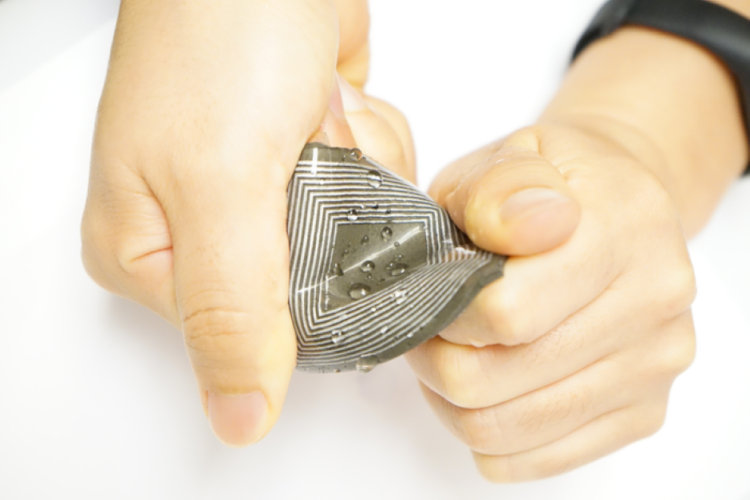
The researchers at the UCLA Samueli School of Engineering discovered that the magnetoelastic effect - the variation of the magnetic properties of a material under mechanical stress - can exist in a soft and flexible system. According to UCLA, the team proved their concept with microscopic magnets dispersed in a paper-thin silicone matrix to generate a magnetic field that changes in strength as the matrix undulated.
The team’s findings have been published in Nature and Nature Materials.
“Our finding opens up a new avenue for practical energy, sensing and therapeutic technologies that are human-body-centric and can be connected to the Internet of Things,” study leader Jun Chen, an assistant professor of bioengineering at UCLA Samueli said in a statement. “What makes this technology unique is that it allows people to stretch and move with comfort when the device is pressed against human skin, and because it relies on magnetism rather than electricity, humidity and our own sweat do not compromise its effectiveness.”
Chen and his team built a small, flexible magnetoelastic generator made of a platinum-catalysed silicone polymer matrix and neodymium-iron-boron nanomagnets. They attached it to a subject’s elbow with a soft, stretchy silicone band and the observed magnetoelastic effect was four times greater than similarly sized setups with rigid metal alloys. As a result, the device generated electrical currents of 4.27mA/cm2, which the team said is 10,000 times better than the next best comparable technology.
It is further claimed that the flexible magnetoelastic generator’s sensitivity could convert human pulse waves into electrical signals and act as a self-powered, waterproof heart-rate monitor. The electricity generated can also be used to sustainably power other wearable devices, such as a sweat sensor or a thermometer.
There have been ongoing efforts to make wearable generators that harvest energy from human body movements to power sensors and other devices, but the lack of practicality has so far hindered progress.
Rigid metal alloys with magnetoelastic effect do not bend sufficiently to compress against the skin and generate meaningful levels of power for viable applications.
Other devices that rely on static electricity tend not to generate enough energy. Their performance can wane in humid conditions, or when there is sweat on the skin. Some have tried to encapsulate such devices in order to keep water out, but that reduces their effectiveness. The UCLA team’s novel wearable magnetoelastic generators, however, tested well even after being soaked in artificial perspiration for a week.
A patent on the technology has been filed by the UCLA Technology Development Group.




Labour pledge to tackle four key barriers in UK energy transition
I'm all for clarity and would welcome anyone who can enlighten me about what Labour's plans are for the size and scale of this Great British Energy....